
 Lan Cable
(29)
Lan Cable
(29)
 Patch Cord
(25)
Patch Cord
(25)
 Optic Fiber
(74)
Optic Fiber
(74)
 Networking Accessories
(424)
Networking Accessories
(424)
 Cable Management
(16)
Cable Management
(16)
 Networking Tools
(206)
Networking Tools
(206)
 Computer Cable
(434)
Computer Cable
(434)
 HDMI Cable
(424)
HDMI Cable
(424)
 USB Cable
(49)
USB Cable
(49)
 Computer Connector
(50)
Computer Connector
(50)
 Coaxial Cable
(1)
Coaxial Cable
(1)
 Alarm Cable
(30)
Alarm Cable
(30)
 Speaker Wire
(8)
Speaker Wire
(8)
 CCTV Accessories
(24)
CCTV Accessories
(24)
 Iphone Cable
(15)
Iphone Cable
(15)
 Computer Peripherals
(78)
Computer Peripherals
(78)
 New Products
(43)
New Products
(43)
Patch Cord
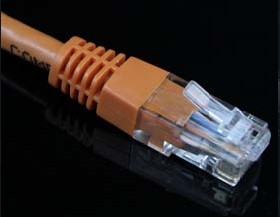 |
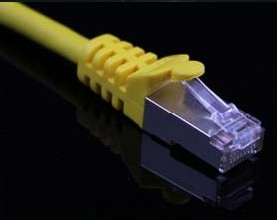 |
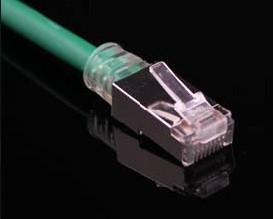 |
|
UTP Cat6a patch cord |
FTP Cat6a patch cord |
SFTP Cat6a patch cord |
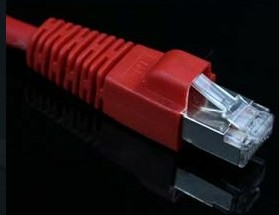 |
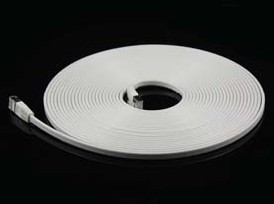 |
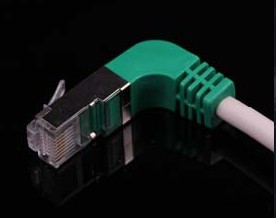 |
|
SSTP Cat6a patch cord |
FTP Cat6 FLAT(SLIM)patch cord |
FTP Cat6 patch cord |
NEW ITEMS:
UTP Cat6 Mini path cord:
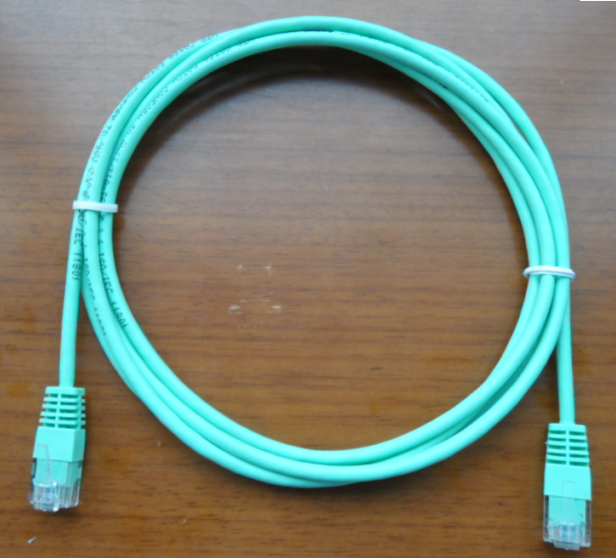
UTP Cat6 Flat path cord:
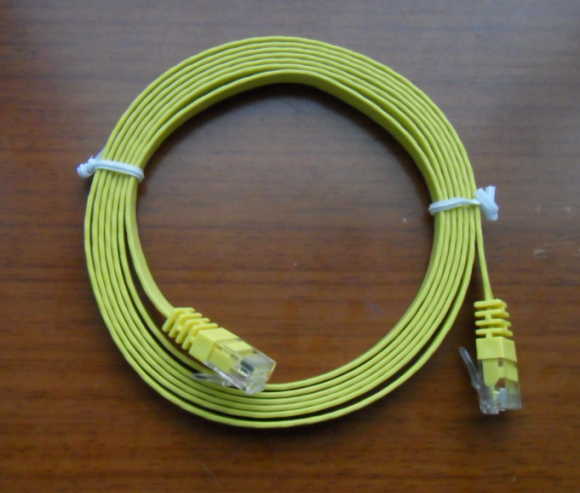
What is a Patch Cord?
A patch cord or patch cable is an electrical used to connect ("patch-in") one electronic device to another for signal routing. Devices of different types (e.g., a switch connected to a computer, or a switch to a router) are connected with patch cords.
Patch cords are useful to those building home computer networks and also to travelers who need wired access to Internet connections such as those provided in hotel rooms. They are normally manufactured using stranded rather than solid sheathing in order to give them pliability that reduces risk of breakage when unplugging or carrying them.
A crossover cable is a specific type of patch cords used to directly connect two computers to each other.
Patch cords are usually produced in many different colors so as to be easily distinguishable. However, patch cords typically refer only to short cords used with patch panels.
Blue stranded category 5e cable with 8P8C plugs, wired T568B-T568B.
Patch cords can be as short as 3 inches (ca. 8 cm), to connect stacked components or route signals through a patch bay, or as long as twenty feet (ca. 6 m) or more in length for snake cables. As length increases, the cables are usually thicker and/or made with more shielding, to prevent signal loss (attenuation) and the introduction of unwanted radio frequencies and hum (electromagnetic interference).
A patch cord is always fitted with connectors at both ends. Patch cords we introduce is Twisted pair Cat5, Cat5e, or Cat6 cables using 8P8C (RJ-45) modular connectors with T568A or T568B wiring.
Cat6a Patch cord
Our Tongrun Category 6A (Cat6A) 10 Gig patch cords have molded boots to prevent the cable from catching when pulled through tight spaces. Built to last, our high quality patch cords are pure copper for maximum throughput and reliability and are covered by a lifetime warranty. Individually bagged and labeled in retail packaging, these Cat6A cables are easy to store and the length and type is easily identifiable. Category 6A cables are qualified to operate at frequencies up to 500MHz. Our Cat6A cables conform to the channel requirements set in TIA/EIA-568-B-2-10 class EA ISO/IEC 11801, CENELEC EN 50173 and IEEE802.3an.
Patch cord Cat6
A patch cord cat6 is a special transmission cable that is used in most devices. Just like patch cord cat5e, they are used to connect two network devices together over a short distance. However, there are many differences between using a normal cat6 Ethernet cable and a patch variant. These differences define the usage of patch cords cat6.
Where are Patch Cat5e Ethernet Cables Used?
The biggest use of Patch Ethernet Cables is in networking where they make maintenance, network segmenting and testing incredibly easy.
If you want to test the networking capabilities of a large network, you wouldn’t drag 30 wires across a single room would you?
The simple way is to have the immovable parts of the system (server, wall brackets, etc.) connected to a patch panel.
Cat5e cables in use:
Then, all you would have to do is connect the patch cord and test the network. It is a whole lot simpler than cable clusters. Furthermore, you would not have to tag the cables as well as and they would be identified identifiable by their panel port number.
Patch cords are heavily used in hotels. A patch cord is usually given to guests so they can connect their laptop or the hotel’s computer (complimentary internet) to the internet service (complimentary internet). Not only is cable and IP management simple for the hotel, it makes life a lot easier for the guest too.
Considering their affordability, a hotel is one of the most common places you will see Patch cords Cat5e.
Colors available shown below:
Package for your reference:
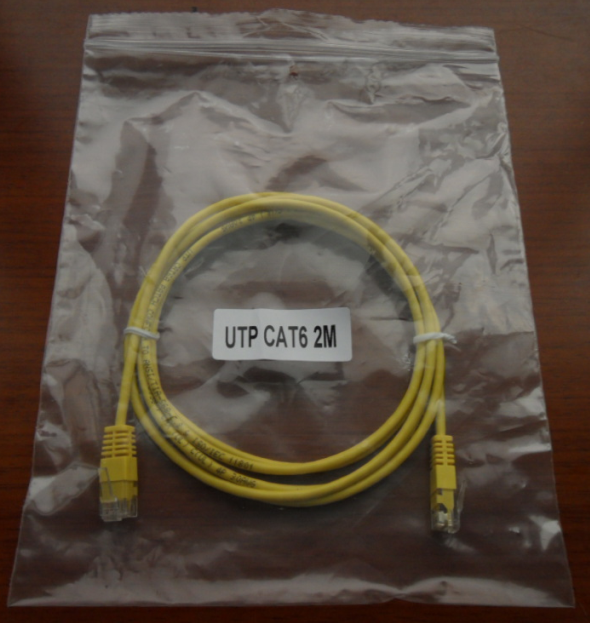 |
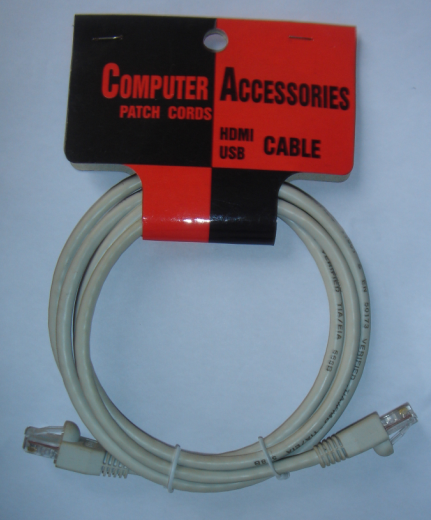 |
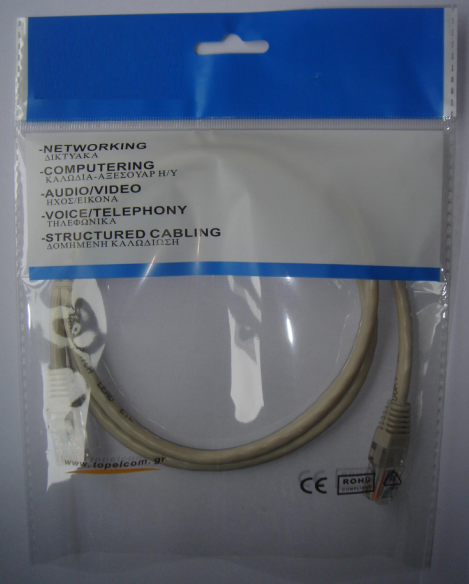 |
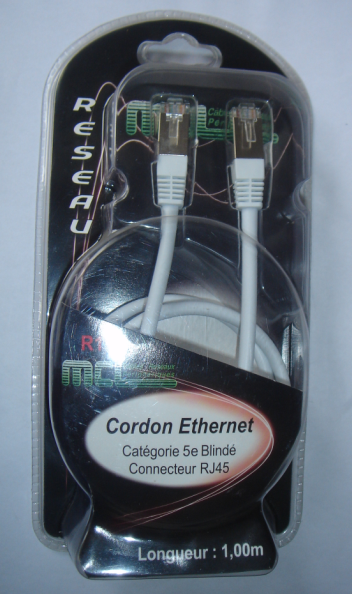 |
|
Polybag packing |
Elevator packing |
Elevator bag packing |
Blister packing |
Test report: